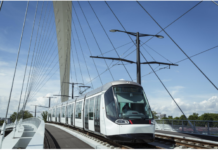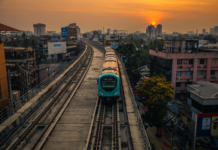Indian Railways, the backbone of India’s transportation system, is recognised as the fourth largest railway network in the world. It operates a vast fleet of more than 13,000 passenger trains. These include 4,111 Mail and Express trains, 3,313 Passenger trains, and 5,774 Suburban trains, ensuring connectivity across urban, semi-urban, and rural regions.
While addressing the financial position of Indian Railways, the Railway Minister highlighted that despite the challenges posed during the COVID-19 pandemic, the system has regained financial stability. Nearly all operational expenses are now met through internal revenue sources. Key components of expenditure include staff costs of ₹1,16,000 crore, pensions for approximately 15 lakh pensioners amounting to ₹66,000 crore, energy expenses of ₹32,000 crore, and financing costs of ₹25,000 crore. The total expenditure currently stands at ₹2,75,000 crore, against a total income of around ₹2,78,000 crore, which reflects a balanced fiscal structure.
Overcrowding: A Persistent Challenge for Indian Railways
Despite being one of the largest and busiest railway networks in the world, Indian Railways continues to face the persistent challenge of overcrowding at stations. While the system has achieved significant milestones in connectivity, capacity, and financial performance, passenger congestion remains a major vulnerability that directly impacts safety and service quality.
Incidents of Stampedes in Indian Railways due to Overcrowding
New Delhi Railway Station Stampede: On February 15, 2025, the tragic stampede at New Delhi Railway Station resulted in at least 18 deaths and 15 injuries, which highlights the urgency for effective crowd control mechanisms. In response, Indian Railways has started implementing Access Control Systems (ACSs) as a modern solution to regulate passenger entry, minimise unauthorised access, and streamline movement within stations.
Elphinstone Road-Parel Station Stampede (2017): A stampede on a narrow foot overbridge during a heavy downpour in Mumbai’s suburban network claimed 23 lives.
Allahabad Railway Station Stampede (2013): During the Kumbh Mela, a stampede at the Allahabad (now Prayagraj) railway station resulted in 36 deaths. The tragedy was attributed to overcrowding and confusion, as people rushed to board trains
The Need for Implementing Access Control Systems at Railway Stations
The implementation of advanced ACS systems, similar to those already deployed in metro networks, can reduce the risk of accidents caused by overcrowding and play a crucial role in safeguarding passenger lives.
1. Passenger Safety and Crowd Regulation
ACS helps regulate the flow of passengers by controlling entry and exit points at stations. This reduces the risk of uncontrolled surges, prevents overcrowding on platforms, and minimises the chances of stampedes, particularly during peak hours or festival seasons.
2. Preventing Unauthorised Access and Ticketless Travel
One of the persistent issues in Indian Railways is ticketless travel, which affects both revenue and crowd management. During the year 2023-24, a total of approximately 2.16 crore passengers were detected travelling without a ticket across the Indian Railways. ACS ensures that only valid ticket holders can access platforms.
3. Faster and Efficient Passenger Throughput
Automated fare collection gates process passengers far more efficiently than manual ticket checks. By supporting QR-code tickets, smart cards, and mobile ticketing systems, ACS reduces long queues and congestion, particularly at high-volume stations.
4. Data-Driven Planning and Analytics
ACS generates valuable passenger flow data that can be analysed to predict demand patterns. Such insights enable railway authorities to optimise station design, allocate resources effectively, and plan train operations more efficiently. Additionally, the data collected by Automatic Fare Collection (AFC) gates can be continuously monitored in real time. In situations where passenger density begins to exceed safe limits, authorities can be alerted before the issue escalates, which allows them for a timely interventions to prevent overcrowding or potential stampede-like situations
6. Emergency Management Capabilities
In emergencies, ACS can be switched to “free flow” mode, enabling rapid evacuation without compromising safety.
7. Alignment with Global Best Practices
Metro systems within India and railway networks abroad, including those in Japan, the UK, and France, have successfully implemented ACS. Indian Railways’ adoption of similar systems brings its operations closer to international standards in safety and efficiency.
Indian Railways Launches Pilot Project to Implement Access Control System at 60 Stations
As per the PIB press release dated March 26, 2025, Indian Railways has initiated a pilot project to implement Access Control Systems (ACS) at 60 railway stations across the country. The move aims to address the persistent issue of overcrowding at stations, which has often led to tragic incidents in the past.
Key Features of the Pilot Project:
- Complete access control will be initiated at the 60 stations.
- Passengers with confirmed reserve tickets will be given direct access to the platforms.
- Passengers without a ticket or with a waiting list ticket will wait in the outside waiting area.
- All unauthorised entry points will be sealed.
Industry Role in Strengthening ACS Implementation
While Indian Railways has taken a decisive step toward addressing overcrowding through ACS, successful implementation at scale will require seamless technology integration, reliable hardware, and robust software solutions. In this context, industry players such as Aurionpro Toshi Automatic can contribute meaningfully. With proven expertise in access control technologies, digital fare collection systems, and passenger management solutions, Aurionpro Toshi Automatic is positioned to support Indian Railways in deploying ACS effectively across its stations. Their involvement can help ensure that the systems are technologically reliable, scalable, and aligned with the long-term objective of building a safer and more efficient railway network.
Proven Track Record of Aurionpro Toshi Automatic in Metro AFC Deployments
- Noida Metro (2019): Aurionpro led the implementation of an open-loop Automated Fare Collection system, featuring QR-code tickets, RuPay contactless smart cards, and mobile ticketing, one of the first such systems in India.
- Kanpur Metro Project: Aurionpro Toshi was selected by UPMRCL for the supply, installation, and 10-year support of NCMC-based AFC infrastructure, valued at near ₹140 crore.
- Delhi Metro (2024): The company won a major contract to deliver AFC technology, including gates, validators, and card readers across multiple Phases of the system. These components are fully manufactured in India at Aurionpro’s Ghaziabad facility.
- Mumbai Metro 2025: Mumbai Metropolitan Region Development Authority ( MMRDA) awarded Aurionpro the Automated Fare Collection (AFC) systems contract worth Rs. 250 Crores for Mumbai Metro’s Line 4 & 4A.
- . Aligning with Make in India: Aurionpro Toshi is notably the first in India to have a contactless payment reader certified for RuPay QSPARC, along with their own issuance and acquiring platform.
Indigenous Manufacturing: The company currently operates three production facilities, with two additional units in the planning stage. This expanding domestic manufacturing capability plays a crucial role in reducing India’s dependence on foreign imports for critical public infrastructure.
Technological Self-Reliance: By combining Toshi’s manufacturing expertise with Aurionpro’s technology and software capabilities, the company has created an end-to-end solution for automatic fare collection. This means India now has a fully indigenous solution for its metro and railway AFC needs, rather than having to rely on foreign companies for both the hardware (gates) and the software (fare management systems).
Conclusion
Aurionpro Toshi Automatic is a practical example of how the Make in India initiative is being applied in the public transit sector. It reflects a gradual shift from dependence on foreign technology towards the development and implementation of indigenous solutions. The company contributes to reducing reliance on imports by providing domestically manufactured systems such as Access Control and Automatic Fare Collection, which can directly support projects like the pilot rollout of ACS at 60 railway stations. Furthermore, with its established production facilities and planned expansions, the company is equipped to meet larger demand requirements if Indian Railways decides to scale up this initiative nationwide.





